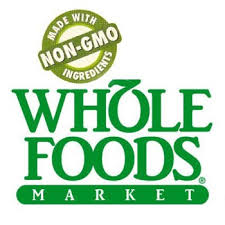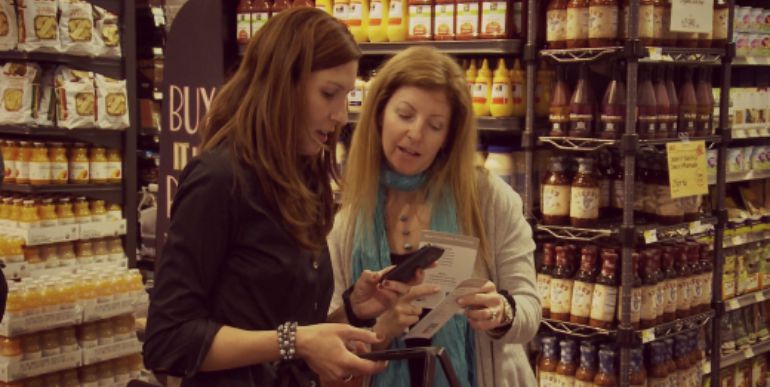As we speak, bills that would require labeling of GMOs are on the docket of 30+ different US state legislatures. It’s driven by the Right To Know GMO campaign and by a growing mass of consumers that are pushing these laws towards national legislature at top speed.
Their goal? To get any products that contain GMO ingredients to be labeled as such, so that everyone can make informed choices about the food they are putting in their body (and so that people can avoid them if they want to).
Because of the concerns surrounding GMOs, the reality is that any federal requirement to label GMOs will cause most manufacturers to move away from using ingredients that contain any GMOs in the first place.
 Think that’s a bold assumption? Since Whole Foods announced that it would require GMO labeling for all of their vendors by 2018, we’ve personally seen 95%+ of their vendors that we work with who were using GMO ingredients switch to more expensive non-GMO ingredients rather than label the GMOs. Why?
Think that’s a bold assumption? Since Whole Foods announced that it would require GMO labeling for all of their vendors by 2018, we’ve personally seen 95%+ of their vendors that we work with who were using GMO ingredients switch to more expensive non-GMO ingredients rather than label the GMOs. Why?
A) Whole Foods prefers this choice and
B) their target market wants non-GMO ingredients, which promises more sales moving forward.
No one wants to be the only GMO vendor in Whole Foods when their entire customer base despises GMOs!
So how does this affect you as a food manufacturer? At the very least, if the GMO labeling laws are passed, you’ll need to make logistical changes to your labels. But bigger than that, these trends show a clear call from consumers on what they want. You should be keeping a close eye on what’s going on to figure out how to make your customers happy and remain competitive once much of your competition is non-gmo.
In the case that GMO labeling laws go into effect in the near future, here’s what your business will need to evaluate to decide whether you’re going to label GMO or switch to non-GMO ingredients.
If you’re a Whole Foods vendor, you should be doing this evaluation now — don’t wait, because your deadline is 2018, no matter what the government mandates.
Evaluate GMO vs. Non-GMO Ingredients

Before you make any labeling changes, you’ll need to choose one of two paths: GMO or non-GMO. Your choice is important, because it’s both a sourcing decision as well as a statement about your company and what you stand for, which is a marketing decision.
If your product contains GMOs, you’ll need to compare the cost of upgrading to a non-gmo version of the ingredient, or you’ll need to find some alternative ingredients all together. For example, if you’re buying a conventional canola oil, you’ll need to switch to a non-gmo canola oil or choose another naturally GMO free oil. Gather the costs of switching and keep these numbers handy.
If you choose to go the non-GMO route, you’ll also need to get Non-GMO Project Verified if you’re selling to Whole Foods. They’re now requiring that any of their non-GMO vendors be backed by the Non-GMO Project Verification™. Get a cost estimate on the verification process and add that to the cost of switching to non-gmo ingredients above.
Do Market Research On Your Target Customer

We know that the cost of switching to non-GMO ingredients can feel like an expensive switch. But you know what’s more detrimental to your business than high costs? Having sales drop to an unsustainable level.
To avoid a drop in sales, you’ll need to make sure that you’re giving your customers a product that they really want to buy. To get accurate information in today’s ever-changing market, the best thing to do is to survey your target customers and get a good idea on how many will tolerate GMOs and continue to buy your product, versus how many will avoid your product (and buy your non-gmo competition).
In a ABC News poll, 57% of Americans said that they'd be less likely to buy foods labeled as genetically modified. In reality, that number is probably higher due to the percentage of women that do the grocery shopping. While 49% of men say they'd be less likely to buy food labeled as genetically modified, 65% of women stated that they’d be less likely to buy a GMO labeled food — and women are typically the ones doing the grocery shopping in US homes.
Once you get a better picture of what your target market wants, you can make an informed decision on using GMO vs. non-GMO ingredients. The goal here is to maintain sales — even if you do have to increase your price to cover your higher costs.
Picture This: Let’s pretend we’re 5 years in the future and the US has a mandatory GMO labeling law. Your product that contains GMO ingredients will have a little statement on the back: “contains GMOs”. It’s my personal belief that there’s enough of a stigma around the statement “contains GMOs”, that customers who today might not seek out exclusively non-GMO products will avoid those that contain GMOs once non-GMO becomes the norm.
Change Your Labels & Packaging

As GMO labeling laws become more strict, you’ll need to make some decisions about your packaging. Are you going to change your labels to read “Contains GMOs” when you need to, or will you switch to non-GMO ingredients?
Depending on the choice that you make, you’ll need to add information to your label either way to transparently show your decision. Your choice will all depend on what will make your customers happy and maintain your sales!
In Conclusion
Deciding whether to label GMOs or go non-GMO is no easy task for a natural food manufacturer. To make the decision, you’ll need to fully understand your target market, what’s going to make your customers happy and what will make the most sense financially, in the long run, to support your big picture business growth and viability.
Once you’ve made this tough decision, product label changes will be required either way.
While a federal labeling law has not come to head quite yet, it’s likely that it will be on the docket in the next few years. Any vendors selling to Whole Foods Market (or trying to) will need to approach this question now, because of their 2018 deadline requiring GMO labeling transparency.
A Personal Note
No matter how this change affects your business, we have to look at this trend in awe— this is the true power of the consumer, of supply and demand, and of a grassroots movement taking on it’s own momentum and changing the way that we are living and eating.
The fact that each one of us has the power to make large-scale changes in big corporations is still pretty cool to me!
Topics: Non-GMO












